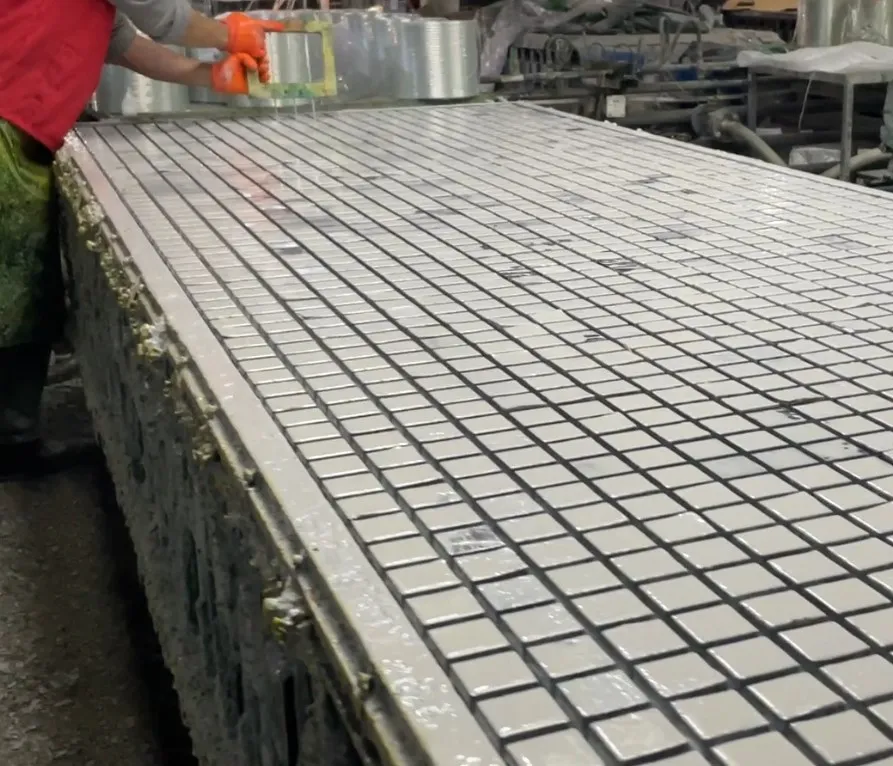loading...
- No. 9, Xingyuan South Street, Dongwaihuan Road, Zaoqiang County, Hengshui, Hebei, China
- admin@zjcomposites.com
- +86 15097380338
- Welcome to visit our website!
grp gratings
Exploring the World of GRP Gratings Applications, Benefits, and Future Trends
Glass Reinforced Plastic (GRP) gratings, also known as fiberglass gratings, have gained significant popularity across various industries owing to their unique properties and versatile applications. This article delves into what GRP gratings are, their advantages, applications, and future trends in the market.
What are GRP Gratings?
GRP gratings are composite materials made from reinforced fiberglass, combining high-strength glass fibers with a polymer resin. These gratings are manufactured through processes such as pultrusion or hand lay-up, which ensure a lightweight yet robust structure. The resulting product is characterized by excellent chemical resistance, low weight, and high strength, making it suitable for diverse environments.
Advantages of GRP Gratings
1. Corrosion Resistance One of the standout features of GRP gratings is their incredible resistance to corrosion. Unlike traditional materials such as steel or aluminum, GRP does not rust or corrode when exposed to harsh chemicals, moisture, or UV light. This property significantly extends the lifespan of installations, making it a cost-effective solution in the long run.
2. Lightweight GRP gratings are much lighter compared to metal gratings, facilitating easy handling and installation. This lightweight nature also reduces the structural load on supporting beams and frameworks, making it ideal for applications where weight is a concern.
3. Non-Conductive The non-conductive properties of GRP make it a safe choice for electrical applications and environments where electrical hazards are a concern. This feature is particularly relevant in areas like power generation, oil and gas, and chemical processing where accidental electrical discharge can pose significant risks.
4. High Strength-to-Weight Ratio GRP gratings deliver impressive strength while maintaining a lightweight profile. This enables the construction of durable walkways, platforms, and other structures that can withstand heavy loads without the need for bulky support systems.
5. Design Flexibility GRP gratings are available in various dimensions and grid patterns, allowing for customized solutions tailored to specific project requirements. Their adaptability makes them suitable for a wide array of applications, from industrial settings to aesthetic architectural designs.
grp gratings

Applications of GRP Gratings
The application spectrum of GRP gratings is vast, encompassing several industries
- Infrastructure GRP gratings are commonly used in flooring and walkways for bridges, piers, and wastewater treatment facilities. Their corrosion resistance is a significant advantage in environments prone to moisture and chemical exposure.
- Oil and Gas Industry In this sector, GRP gratings are utilized for platforms, walkways, and staircases where corrosion from saltwater and other chemicals is prevalent. Their lightweight nature also facilitates the construction of offshore platforms where weight savings are critical.
- Food and Beverage Industry Due to their hygienic properties and ease of cleaning, GRP gratings are favored in food processing areas. They do not harbor bacteria and can withstand regular washing, ensuring compliance with health and safety regulations.
- Marine Applications In marine environments, GRP gratings can hold up against the challenges posed by saltwater, making them ideal for docks and harbors.
- Pharmaceutical Industry GRP gratings are extensively used in pharmaceutical manufacturing facilities due to their non-reactivity and ability to withstand stringent cleaning protocols.
Future Trends
As industries continue to pursue sustainability, the demand for eco-friendly materials is on the rise. The GRP manufacturing process is evolving to utilize recycled materials and bio-based resins, leading to more sustainable products that meet modern environmental standards. Furthermore, advancements in technology are enhancing the durability and aesthetic appeal of GRP gratings, expanding their application range.
In conclusion, GRP gratings represent a remarkable innovation in materials engineering that meets the demands of modern industry. With their robust properties, diverse applications, and strong potential for future development, GRP gratings are set to play a crucial role in various sectors. As industries move towards sustainability and efficiency, the continued evolution of GRP technology will likely open new avenues and opportunities for transformation across numerous fields.
-
Transform Your Spaces with FRP Grating SolutionsNewsNov.04,2024
-
The Versatility and Strength of FRP RodsNewsNov.04,2024
-
The Excellence of Fiberglass Water TanksNewsNov.04,2024
-
The Benefits of FRP Grating for Your ProjectsNewsNov.04,2024
-
Elevate Your Efficiency with FRP Pressure VesselsNewsNov.04,2024
-
Welcome to the World of FRP Pressure VesselsNewsOct.12,2024
-
Unveiling the Future of Filtration: Why FRP Filter Vessels are a Game ChangerNewsOct.12,2024
